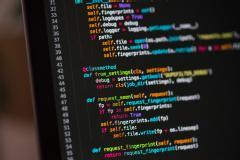This course is designed to provide students with a solid foundation in programming using the C language, while simultaneously building their logical and problem-solving skills. C is one of the most widely-used programming languages and serves as an excellent starting point for learning low-level programming concepts. Throughout the course, students will learn structured programming, algorithms, and how to apply logical reasoning to solve real-world problems.
By the end of this course, students will be able to:
- Understand the basic structure and syntax of the C programming language.
- Apply fundamental programming concepts such as variables, loops, and functions.
- Develop logic-building skills by working through algorithm design and problem-solving exercises.
- Implement basic data structures like arrays, structures, and pointers in C.
- Debug and optimize code efficiently.
- Write programs for basic input/output operations, control structures, and functions.
- Utilize C for practical applications such as file handling and memory management.
Alongside the technical programming skills, this course focuses heavily on developing students' logical reasoning and algorithmic thinking through:
- Algorithm Design: Students will learn how to translate real-world problems into step-by-step algorithmic solutions before coding them.
- Flowcharts and Pseudocode: Understanding how to represent logic visually with flowcharts and write pseudocode for complex logic.
- Problem-Solving Strategies: Regular problem-solving exercises that challenge students to develop solutions, implement them, and optimize performance.
- Debugging and Code Tracing: Emphasis on understanding code flow and using debugging techniques to trace through logic and identify errors.







